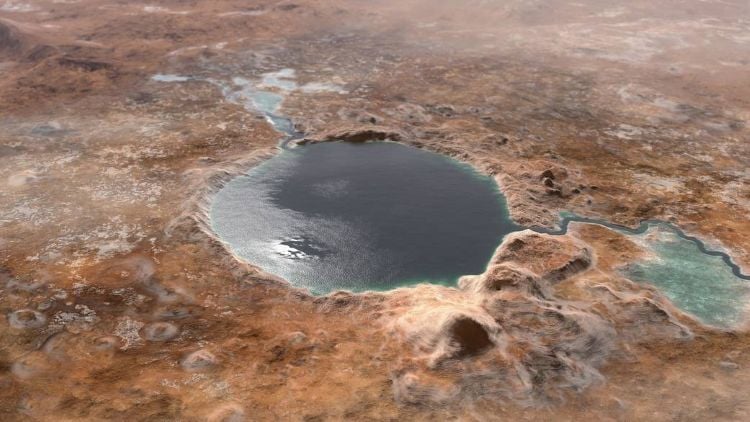What can brine (extra salty) water teach scientists about finding past, or even present, life on Mars? This is what a recent study published in Communications Earth & Environment hopes to address as a researcher from the University of Arkansas investigated the formation of brines using 50-year-old data. This study has the potential to help researchers better understand how past data can be used to gain greater insights on the formation and evolution of surface brines on the surface of Mars.
For the study, Dr. Vincent Chevrier, who is an associate research professor at the University of Arkansas’ Center for Space and Planetary Sciences and sole author of the study, used a combination of meteorological data obtained from the Viking 2 lander and computer models to ascertain if melting frost during late winter and early spring on Mars could produce brines. Dr. Chevrier noted that Viking 2 data was used due to it being the sole mission in history to definitively detect, recognize, and analyze frost on Mars.
In the end, Dr. Chevrier found that during late winter and early spring, the upper latitudes of Mars where the Viking 2 lander is located experiences a one-month period where the surface temperature is approximately -75 degrees Celsius (-103 degrees Fahrenheit) in the early morning and late afternoon, enabling surface brines to briefly exist.
Dr. Chevrier notes in his conclusions, “Beyond the immediate implications for habitability, these results refine our understanding of Mars’ current water cycle. By demonstrating that even minimal frost deposits can contribute to transient brine formation, this study suggests that localized microenvironments might support intermittent liquid phases, influencing surface chemistry, regolith weathering, and even slope activity.”
Viking 2 landed in Utopia Planitia, which is a large plain in the northern latitudes of Mars at approximately 45 degrees north latitude and spanning approximately 3,300 kilometers (2,100 miles). For context, the location is the same as northern Oregon with Utopia Planitia’s size being just less than the width of the continental United States.
Utopia Planitia exhibits a top surface layer known as the latitude dependent mantle (LDM) that is comprised of a mixture of water ice and dust. The LDM is created during periods of high obliquity on Mars, approximately 45 degrees, when the planet’s axial tilt is at a greater angle than today, which currently sits at approximately 25 degrees, slightly greater than Earth’s 23.1-degree obliquity. While Earth has our Moon to stabilize our axial tilt, Mars does not have this stability, resulting in drastic swings over hundreds of thousands of years. During periods of high obliquity, the ice caps at both poles of Mars evaporate, releasing large quantities of frozen water ice, carbon, and dust, that gets deposited onto the high latitudes of Mars.
The water cycle that Dr. Chevrier mentions plays a role during periods of high obliquity and the LDM being deposited during these periods, as well. While obliquity isn’t mentioned in this study, the existence of brines in the high latitudes of Mars could offer clues to what processes occur during periods of high obliquity. Brines could also provide insights into the current habitability of Mars, as mentioned by Dr. Chevrier, while also enabling scientists to learn more about whether life could have existence on ancient Mars.
Dr. Chevrier notes in his conclusions, “Robotic landers equipped with in situ hygrometers and chemical sensors could target these seasonal windows to directly detect brine formation and constrain the timescales over which these liquids persist.”
What new discoveries about Mars surface brines will researchers make in the coming years and decades? Only time will tell, and this is why we science!
As always, keep doing science & keep looking up!
